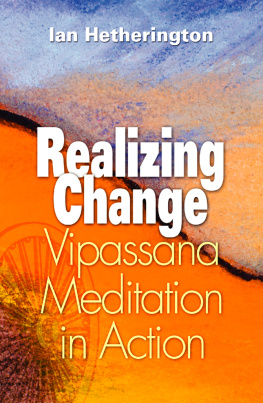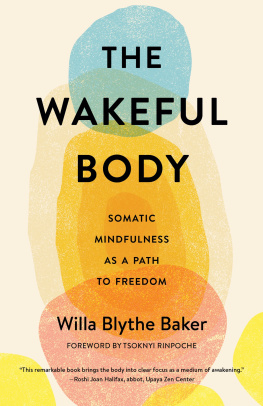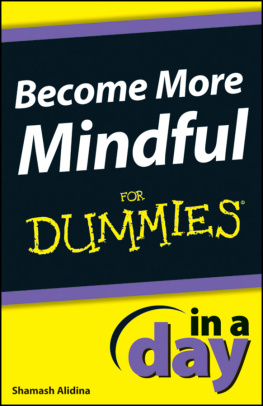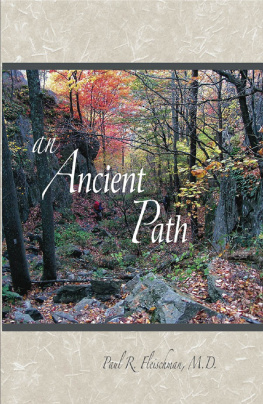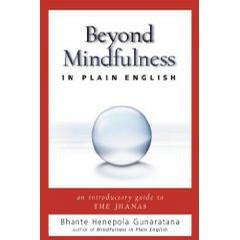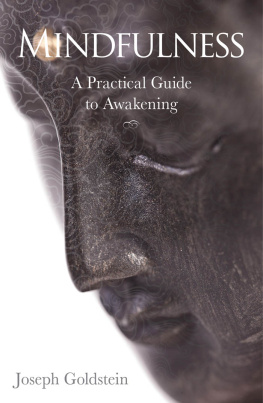Glickman - Beyond the breath : extraordinary mindfulness through whole-body Vipassana meditation
Here you can read online Glickman - Beyond the breath : extraordinary mindfulness through whole-body Vipassana meditation full text of the book (entire story) in english for free. Download pdf and epub, get meaning, cover and reviews about this ebook. City: Boston, year: 2014, 2002, publisher: Journey Editions, genre: Religion. Description of the work, (preface) as well as reviews are available. Best literature library LitArk.com created for fans of good reading and offers a wide selection of genres:
Romance novel
Science fiction
Adventure
Detective
Science
History
Home and family
Prose
Art
Politics
Computer
Non-fiction
Religion
Business
Children
Humor
Choose a favorite category and find really read worthwhile books. Enjoy immersion in the world of imagination, feel the emotions of the characters or learn something new for yourself, make an fascinating discovery.
Beyond the breath : extraordinary mindfulness through whole-body Vipassana meditation: summary, description and annotation
We offer to read an annotation, description, summary or preface (depends on what the author of the book "Beyond the breath : extraordinary mindfulness through whole-body Vipassana meditation" wrote himself). If you haven't found the necessary information about the book — write in the comments, we will try to find it.
Glickman: author's other books
Who wrote Beyond the breath : extraordinary mindfulness through whole-body Vipassana meditation? Find out the surname, the name of the author of the book and a list of all author's works by series.
Beyond the breath : extraordinary mindfulness through whole-body Vipassana meditation — read online for free the complete book (whole text) full work
Below is the text of the book, divided by pages. System saving the place of the last page read, allows you to conveniently read the book "Beyond the breath : extraordinary mindfulness through whole-body Vipassana meditation" online for free, without having to search again every time where you left off. Put a bookmark, and you can go to the page where you finished reading at any time.
Font size:
Interval:
Bookmark:
ACKNOWLEDGMENTS
Id like to thank the following people:
Sarah Jane Freymann, my agent, who edited and helped shape the proposal, found a publisher (or two) for the book, and was always charming, even when I asked mundane questions.
Beth Umland, my sister-in-law, who is both family and one of my closest friendsalthough what she did for this book went beyond friendship and verged toward saintliness. When I first handed Beth my final draft, I didnt realize how rickety it was. But like a combination architect, carpenter, and tai chi master, she helped shape it into something solid by knowing what needed detailing, what needed remodeling, and what called for outright demolition. That she was able to do all this with good humor while also managing a high-powered job and hectic family life (and no doubt also whipping through a few other books at the same time), is a testament to her intelligence and innate wisdom. As a mutual friend with Hindu leanings said of Beth, She is an old soul.
Susan Gunther-Mohr for reading the karma chapter and giving valuable feedback.
Ben Gleason and Ed Walters, Tuttle editors, who gave many wise and thoughtful suggestions to make this book considerably more reader-friendly. And, Ashley Benning, for patiently answering my many questions about the copyedited manuscript and inputting my changes.
Jennifer Radalin, for adding clarity with her excellent copyediting and for weaning me from an inordinate fondness for quotation marks. And Linda Carey for her elegant text design.
Margaret Wimberger, my wife, for editing help and especially for tolerating my many late and weekend hours at the computer.
Likewise, I thank and apologize to Soph and Lena Bean for putting up with lost dad time.

APPENDIX

TAKING A RETREAT
J ust as a book about yoga cant truly replace taking yoga classes, this book cant truly be a substitute for spending ten days learning this method under the eye of an instructor. Indeed the best way to understand this method is by taking a ten-day coursewhich is designed to teach those new to this method. Although Mr. Goenka retired from presenting courses himself in the 1980s, the main instructions and talks at a course are given by him via audio and videotapes, with assistant teachers available at each course to give individualized guidance.
Mr. Goenka is a very skillful teacher. Hes deft with tone and timing, and his words resonate with a much greater impact when heard than read. Mr. Goenkas power as a teacher reflects both his own depth of insight and his experience from instructing tens of thousands of students.
A ten-day course is the ideal setting for learning this technique. At a retreat you can be totally absorbed in meditating without your usual concerns. You dont have to worry about money, work, preparing meals, or doing chores. Youll be surrounded by other meditators putting out a strong effort, and of course its helpful to have a teacher available to answer any questions you may have. This atmosphere makes it much easier to work with intent and intensity. On your own youd be unlikely to meditate eleven hours a day for ten days. In fact, if you havent done a retreat before, Id strongly recommend against meditating for many hours a day on your own as you may experience unfamiliar or unsettling states of mind. Yet, in the positively charged environment of a retreat, even people whove never meditated a whit before can manage sitting for the whole course and get great benefit from it.
Not surprisingly, this concentrated, consistent effort allows you to go deeper into the technique than if you practice on your own. So remember that any glimpses of peacefulness and insight you find from doing this on your own will be added to and multiplied many-fold on a retreat. In other words, you havent truly given the method a fair chance until you do a course.
To take a 10-day course, contact one of the North American meditation centers listed on the following page. They will send you information that includes a schedule of available courses, what your daily schedule will be, and other details about rules and expectations. You can also find more information about this method and centers worldwide through the website www.dhamma.org
Although its unlikely meditating on your own, even a couple hours a day, would land you in unnerving psychological territory, if you do find yourself shaken, take a break and do something that grounds you, like talking to someone, going for a walk, or just focusing on your breath. No one ever got hurt from meditating, although if you have a mental disorder, I advise against doing this on your own.

MAIN CENTERS IN NORTH AMERICA
Vipassana Meditation Center
P.O. Box 24, Shelburne Falls, MA 01370
413-625-2160. Fax: 413-625-2170
info@dhara.dhamma.org
California Vipassana Center
P.O. Box 1167, North Fork, CA 93643
559-877-4386. Fax 559- 877-4387
info@mahavana.dhamma.org
Northwest Vipassana Center
P.O. Box 345, Ethel, WA 98542
360-978-5434. Fax: 360-978-5433
info@kunja.dhamma.org
Southwest Vipassana Meditation Center
P.O. Box 190248, Dallas, TX 75219
214-521-5258. Fax: 214-522-5973
info@siri.dhamma.org
Quebec Vipassana Meditation Center
P.O. Box 32083, Les Antriums, Montreal, QC H2l-4Y5
514-481-3504. Fax: 515-879-3437
info@suttama.dhamma.org
Vipassana Meditation Center, BC
Box 529, Cambie, Vancouver, BC V5Z-4R3
604-730-9877. 604-641-2801
info@surabhi.dhamma.org
At this writing, there are also eleven satellite centers offering occasional or once a year 10-day courses in various spots throughout the U.S. Check the website www.dhamma.org or one of the main centers listed above for details.
Keep in mind this organization is run by volunteers, so responses to your inquiries may not be immediate.
Selected Bibliography
Austin, James. Zen and the Brain . Cambridge: MIT Press, 1999.
Batchelor, Stephen. Buddhism Without Beliefs . New York: Riverhead Books, 1997.
Bercholz, Samuel and Kohn, Sherab Chdzin, editors. Entering the Stream . Boston: Shambhala Publications, 1993.
Bhikkhu Bodhi. The Middle Length Discourses of the Buddha . Boston: Wisdom Publications, 1995.
Briggs, John and Peat, David. Seven Life Lessons of Chaos . New York: HarperCollins, 1999.
Buddhist Publication Society. Egolessness: Collected Essays . Kandy, Sri Lanka: Buddhist Publication Society, 1984.
Capra, Fritjof. The Tao of Physics . New York: Bantam, 1975.
Dalai Lama and Cutler, Howard. The Art of Happiness . New York: Riverhead Books, 1998.
Darling, David. The Zen of Physics . New York: Harper Collins, 1996.
Das, Surya. Awakening the Buddha Within . New York: Broadway Books, 1997.
de Silva, Lily. Nibbana As Living Experience . Kandy, Sri Lanka: Buddhist Publication Society, 1996.
Dennett, Daniel. Consciousness Explained . Boston: Little Brown & Co., 1991.
Epstein, Mark. Thoughts Without a Thinker . New York: Basic Books, 1995.
Fields, Rick. How the Swans Came to the Lake . Boston: Shambhala Publications, 1992.
Fleischman, Paul. Cultivating Inner Peace . New York: Tarcher, 1997.
Fleischman, Paul. Karma and Chaos . Seattle: Vipassana Research Publications, 1999.
Flickstein, Matthew. Journey to the Center . Boston: Wisdom Publications, 1998.
Flickstein, Matthew. Swallowing the River Ganges . Boston: Wisdom Publications, 2001.
Glickman, Marshall. The Mindful Money Guide . New York: Ballantine Books. 1999.
Font size:
Interval:
Bookmark:
Similar books «Beyond the breath : extraordinary mindfulness through whole-body Vipassana meditation»
Look at similar books to Beyond the breath : extraordinary mindfulness through whole-body Vipassana meditation. We have selected literature similar in name and meaning in the hope of providing readers with more options to find new, interesting, not yet read works.
Discussion, reviews of the book Beyond the breath : extraordinary mindfulness through whole-body Vipassana meditation and just readers' own opinions. Leave your comments, write what you think about the work, its meaning or the main characters. Specify what exactly you liked and what you didn't like, and why you think so.




